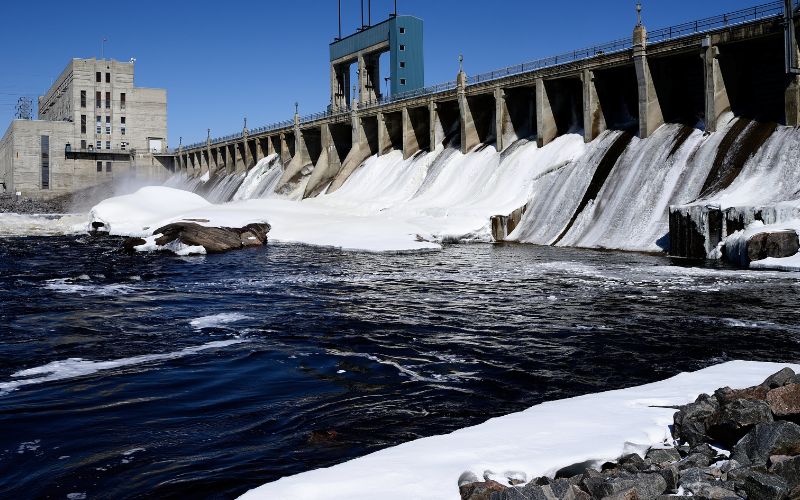
- Details
- By Kaili Berg and Elyse Wild
Federal hydropower dams are harming Native American communities in the Columbia River Basin, according to a first-of-its-kind report by the Department of the Interior released yesterday.
The report fulfills a commitment in National Wildlife Federation v. National Marine Fisheries Service, and examines “the historic, ongoing and cumulative impacts of federal dams on Columbia River Basin Tribes and provides recommendations for how the federal government can uphold its trust responsibilities to the Basin Tribes.” As well, the DOI it is launching a task force to restore native fish in the river basin and expand tribally endorsed clean energy projects in the region.
The Columbia River Basin spans 260,000 miles across seven states in the Pacific Northwest. With more than 470 dams on in its main stem and tributaries, it is one of the most dammed river systems in the world.
The 70-page report examines the adverse effects of 11 federal dams across the basin and the impacts on eight of the basin’s Tribal Nations: Coeur D’Alene Tribe of Indians, The Confederated Tribes and Bands of the Yakama Nation, The Confederated Tribes of the Colville Reservation, the Confederated Tribes of the Umatilla Indian Reservation, the Confederated Tribes of the Warm Springs Reservation of Oregon, the Nez Perce Tribes, Shoshone-Bannock Tribes of the Fort Hall Reservation, and Spokane Tribe of Indians.
Since time immemorial, the Tribes of the Columbia River Basin have served as stewards of its abundant natural resources, focusing on salmon, Pacific lamprey, trout, elk, deer, and other species. The Columbia River and its tributaries are vital to Tribal cultures, supporting cultural practices, spiritual beliefs, and traditional economies deeply rooted in the river’s ecosystems.
However, the construction and operation of federal dams along the Columbia River and lower Snake River dramatically altered these ecosystems. These dams redirected the river’s natural flow, flooded extensive areas of land, and disrupted critical ecosystem functions essential to Tribal life.
According to the report, this transformation, exacerbated by decades of industrial activities and settlement impacts, has disproportionately affected Tribes, undermining their ability to exercise treaty-reserved rights, including the harvest of salmon at traditional sites. These impacts span cultural and sacred sites, traditional lands, fisheries, and economic livelihoods, collectively undermining Tribal sovereignty and well-being. These impacts span cultural and sacred sites, traditional lands, fisheries, and economic livelihoods, collectively undermining Tribal sovereignty and well-being.
The report is the latest in the White House’s efforts to amend environmental harms driven by federal policy in the region. In February, the Biden administration, along with tribal leaders from Washington and Oregon, signed off on a $1 billion plan to restore salmon in the Columbia River Basin.
Help us defend tribal sovereignty.
At Native News Online, our mission is rooted in telling the stories that strengthen sovereignty and uplift Indigenous voices — not just at year’s end, but every single day.
Because of your generosity last year, we were able to keep our reporters on the ground in tribal communities, at national gatherings and in the halls of Congress — covering the issues that matter most to Indian Country: sovereignty, culture, education, health and economic opportunity.
That support sustained us through a tough year in 2025. Now, as we look to the year ahead, we need your help right now to ensure warrior journalism remains strong — reporting that defends tribal sovereignty, amplifies Native truth, and holds power accountable.
 The stakes couldn't be higher. Your support keeps Native voices heard, Native stories told and Native sovereignty defended.
The stakes couldn't be higher. Your support keeps Native voices heard, Native stories told and Native sovereignty defended.
Stand with Warrior Journalism today.
Levi Rickert (Potawatomi), Editor & Publisher

